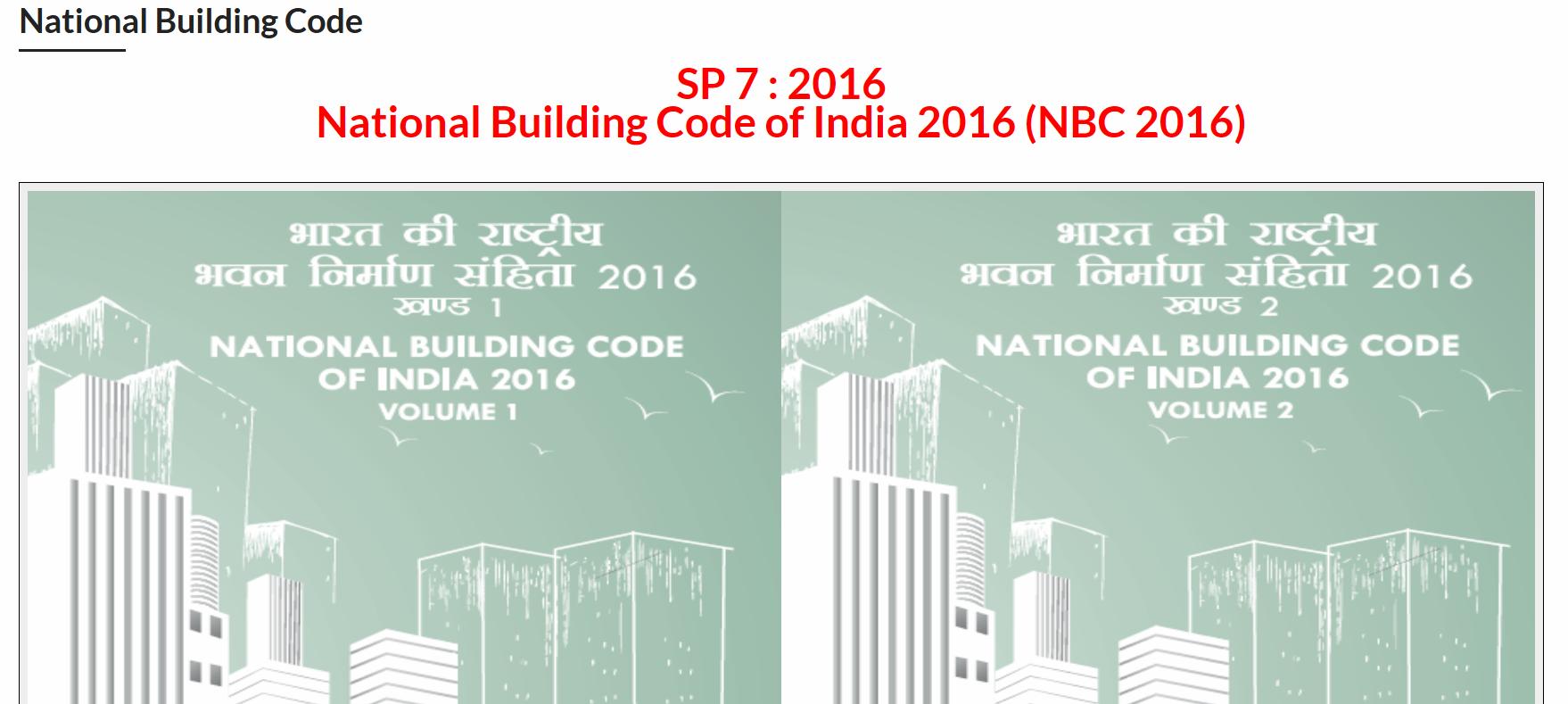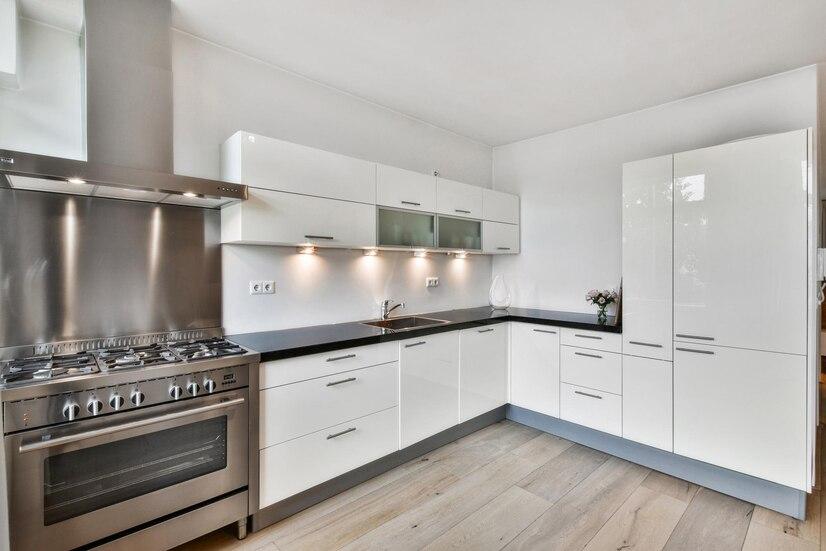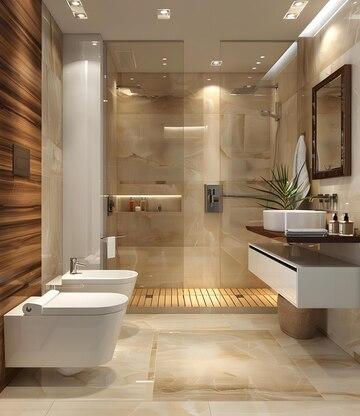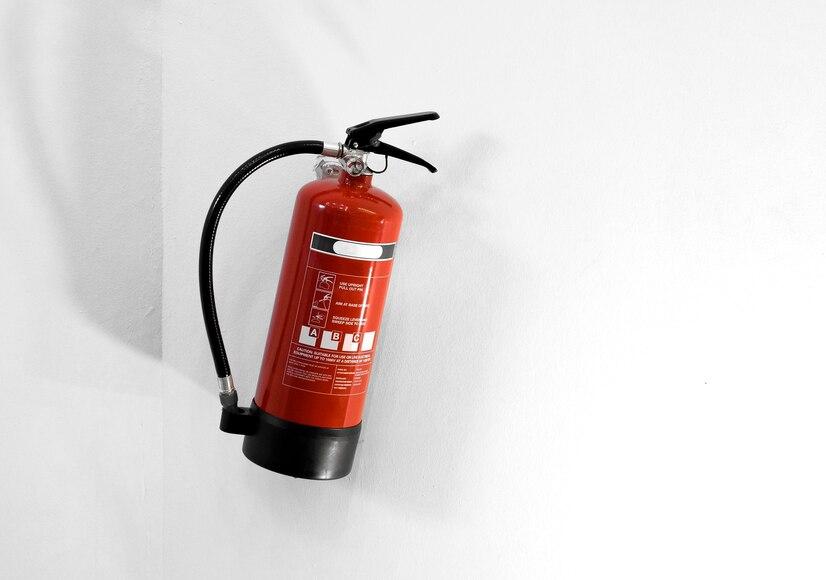



Table of Contents
- Introduction
- Updates Made in National Building Code in 2016
- Objectives of the NBC
- Structure of the NBC
- Key Areas Covered by the NBC
- What Does Residential Buildings entail as per NBC Guidelines?
- NBC Codes for Kitchens
- NBC Guidelines for Bathrooms
- NBC Guidelines for Lofts
- NBC Guidelines for Basements
- NBC Guidelines for Garages
- Staircase Width as per NBC Guidelines
- NBC for Residential Building Open Areas
- NBC Codes Related to Building Sites
- NBC Guidelines Related to Building Exits
- NBC Guidelines Regarding Fire Safety
- NBC Guidelines: Occupancy and Maintenance
- Faq's
Introduction
The National Building Code of India (NBC) is a comprehensive set of guidelines that serves as a national instrument for regulating building construction activities across the country. Introduced in 1970 and revised multiple times, the NBC provides a model code for adoption by various agencies involved in construction, including public works departments, government construction agencies, local bodies, and private construction firms. Its primary aim is to ensure safety, health, and welfare in the built environment through well-defined administrative regulations, development control rules, and general building requirements.
The NBC encompasses a wide range of topics essential for building construction, including fire safety requirements, stipulations regarding materials, structural design and construction safety, building and plumbing services, and approaches to sustainability. It also addresses asset and facility management to ensure the longevity and functionality of buildings.
The first revision of the NBC occurred in 1983, followed by several amendments over the years. The second major revision took place in 2005, with amendments issued in 2015. However, due to significant changes in building construction practices, such as the prevalence of high-rise buildings, mixed occupancies, complex building services, and innovative materials, there was a pressing need for a comprehensive update. This led to the formulation of the NBC 2016, developed under the auspices of the Bureau of Indian Standards (BIS) with input from approximately 1,000 experts across various fields.

Updates Made in National Building Code in 2016
The NBC 2016 is structured into 12 parts, which are further divided into 33 chapters. This updated code reflects contemporary international practices and incorporates salient features designed to enhance resilience against natural disasters.
Key updates include:
Professional Collaboration: Enhanced provisions for involving need-based professionals and agencies to ensure accountability throughout the building project lifecycle.
Streamlined Approval Processes: Introduction of an integrated approval process through a single-window approach to facilitate quicker approvals from multiple agencies.
Digitalisation: Detailed provisions for online submission of plans and drawings to expedite the approval process.
Structural Safety Certification: Strengthened mechanisms for certifying structural safety through competent professionals and peer reviews.
Accessibility Improvements: Comprehensive updates to ensure buildings are accessible to persons with disabilities and the elderly.
Modern Fire Safety Standards: Thorough revisions to fire safety provisions tailored for complex modern buildings.
Advanced Structural Design Codes: Inclusion of updated codes related to wind loads, earthquake resistance, and other structural considerations.
Sustainability Focus: Introduction of guidelines promoting energy efficiency and environmentally compatible practices through a dedicated chapter on sustainability.
In addition to these changes, new chapters have been added addressing structural use of glass, escalators and moving walks, information communication technologies in buildings, solid waste management, and asset management.
These updates reflect a proactive approach to modern challenges in building construction while promoting innovation and sustainability.
Overall, the NBC serves as an essential framework that not only guides construction practices but also ensures that developments are safe, sustainable, and aligned with contemporary needs.
Objectives of the NBC
Safety: To safeguard public health and safety through well-defined construction practices.
Structural Integrity: To ensure buildings are structurally sound and can withstand environmental stresses.
Fire Safety: To mitigate fire hazards through stringent guidelines on materials and design.
Sustainability: To promote energy-efficient and environmentally friendly construction practices
Structure of the NBC
The NBC is divided into several parts, each addressing different aspects of building construction.
The latest version, NBC 2016, comprises 12 parts with 33 chapters covering a wide range of topics:
Part Title
- Part 0 Integrated Approach
- Part 1 Definitions
- Part 2 Administration
- Part 3 Development Control Rules
- Part 4 Fire and Life Safety
- Part 5 Building Materials
- Part 6 Structural Design
- Part 7 Building Services
- Part 8 Construction Management
- Part 9 Housing
- Part 10 Urban Planning
- Part 11 Approach to Sustainability
Key Areas Covered by the NBC
1. Fire Safety
Fire safety is a critical component of the NBC, particularly detailed in Part 4. The guidelines cover:
Fire Prevention: Recommendations for materials with appropriate fire ratings.
Life Safety: Provisions for safe evacuation during emergencies, including mandatory fire drills.
Fire Protection Systems: Specifications for fire alarms, extinguishers, automatic sprinklers, and other firefighting equipment.
The code mandates that every building must be equipped to prevent undue danger from fire or smoke during emergencies.
2. Structural Design
Part 6 of the NBC focuses on structural design principles to ensure buildings can endure various loads (e.g., wind, seismic). This includes guidelines on:
Material specifications (concrete, steel, timber).
Load calculations and structural stability assessments.
Requirements for foundation design based on soil conditions25.
3. Building Services
This encompasses all essential services needed for a functional building:
Plumbing: Standards for water supply systems, drainage, and sanitation.
Electrical Installations: Guidelines for safe electrical wiring and lighting systems.
Ventilation and Air Conditioning: Requirements for maintaining indoor air quality45.
4. Sustainability
NBC emphasizes sustainable practices through its approach to energy efficiency and resource conservation.
This includes guidelines on:
Use of renewable materials.
Energy-efficient designs that reduce consumption.
Waste management practices during construction.
Compliance and Implementation
While initially voluntary, adherence to the NBC has become mandatory as it has been incorporated into local bye-laws across many states in India. Compliance ensures that buildings meet minimum safety standards regarding structural integrity, fire hazards, and health aspects.
What Does Residential Buildings entail as per NBC Guidelines?
According to the National Building Code of India (NBC), residential buildings are defined as structures that provide sleeping accommodations for normal residential purposes, which may or may not include cooking and dining facilities. The code classifies residential buildings into several categories, including:
- Single-family dwellings (bungalows, villas)
- Multi-family dwellings (apartments, flats)
- Lodging or rooming houses
- Dormitories
- Hotels
- Hostels
These classifications help ensure that buildings meet specific safety, health, and structural standards tailored to their intended use.
NBC Codes for Kitchens

The NBC provides specific guidelines for kitchen design to ensure functionality and safety:
- Kitchens must have an impermeable floor to prevent water damage.
- A provision for washing utensils must be included, with proper drainage connections.
- Kitchens should open into an exterior or interior open space, with a minimum area of one square meter.
- No kitchen should open into a shaft or chute if the building exceeds 15 meters in height.
These guidelines aim to create safe and efficient cooking environments within residential buildings.
NBC Guidelines for Bathrooms

NBC guidelines for bathrooms focus on ensuring hygiene and safety:
- Bathrooms must have adequate ventilation to prevent moisture buildup.
- The minimum area for a bathroom should be at least 1.5 square meters.
- Proper drainage systems must be installed to manage wastewater effectively.
- Non-slip flooring is recommended to enhance safety.
These provisions help maintain sanitary conditions while ensuring user safety.
NBC Guidelines for Lofts
Lofts are often used in residential buildings as additional living spaces or storage areas. The guidelines include:
- A minimum ceiling height of 2.4 meters is required for lofts.
- Adequate access must be provided through stairs or ladders that comply with width and safety standards.
- Proper ventilation should be ensured to maintain air quality.
These regulations help maximise usability while maintaining safety standards.
NBC Guidelines for Basements
Basements require specific considerations under the NBC:
The minimum ceiling height should be 2.5 meters, with a maximum height of 4.5 meters.
Adequate ventilation must be provided to prevent dampness and ensure air quality.
Basements should be constructed with materials that can withstand moisture ingress and flooding risks.
This guidelines see to it that basements are safe, functional, and comfortable living spaces.
NBC Guidelines for Garages
The guidelines for garages focus on safety and accessibility:
Garages must have adequate space for vehicle maneuverability, typically requiring a minimum width of 3 meters.
Ventilation is essential to prevent the buildup of harmful gases from vehicles.
Floors should be constructed with materials that can withstand vehicle loads and spills.
These provisions ensure that garages are practical and safe environments for vehicle storage.
Staircase Width as per NBC Guidelines

Staircase width is critical for safe evacuation during emergencies:
- The minimum width of staircases should be at least 1 meter; however, wider staircases are required based on occupancy load.
- Handrails must be provided on both sides of the staircase, with a minimum height of 100 cm.
- Staircases should have non-combustible materials, ensuring safety during fire emergencies.
NBC for Residential Building Open Areas
Open areas around residential buildings serve multiple purposes:
- They provide necessary ventilation and natural light to the structure.
- Setback requirements dictate the minimum distance between the building and property boundaries, ensuring privacy and space for landscaping.
- Open spaces should be designed to accommodate recreational activities while maintaining aesthetic appeal.
The guidelines support urban planning principles aimed at enhancing livability.
Also Read: Pelton Wheel Turbine: Everything You Need to Know
NBC Codes Related to Building Sites
NBC codes related to building sites emphasise site preparation and management:
- Site drainage must be adequately managed to prevent waterlogging around foundations.
- Soil testing is required before construction to assess load-bearing capacity.
- Environmental considerations must be taken into account during site development to minimize ecological impact.
These codes ensure that building sites are prepared safely and sustainably.
NBC Guidelines Related to Building Exits
Building exits are vital for occupant safety during emergencies:
- Every building must have clearly marked exits that are easily accessible.
- Exits should not be reduced in number or width based on occupancy load; they must remain illuminated at all times.
- Exit pathways must lead directly outside without obstructions, allowing swift evacuation during emergencies.
These guidelines help ensure safe egress from residential buildings in crisis situations.
Also Read: Wire Color Coding in India: A Comprehensive Guide
NBC Guidelines Regarding Fire Safety

Fire safety is a critical component of the NBC:
- Buildings must incorporate fire-resistant materials and design features to minimize fire spread risks.
- Fire detection systems (alarms) and extinguishing systems (sprinklers) are mandatory based on occupancy type and building height.
- Regular fire drills should be conducted to prepare occupants for emergency evacuations.
These regulations aim to protect lives by minimising fire hazards within residential structures.
NBC Guidelines: Occupancy and Maintenance
Occupancy guidelines focus on ensuring that buildings remain safe throughout their lifespan:
- Regular maintenance checks are mandated to ensure compliance with safety standards.
- Occupancy limits are established based on building size and design features, preventing overcrowding.
- Emergency plans must be developed and communicated effectively among occupants.
- These guidelines promote ongoing safety and functionality within residential buildings over time.
The National Building Code of India provides comprehensive guidelines across various aspects of residential construction, from design considerations like kitchens and bathrooms to critical safety measures regarding fire hazards and emergency exits. Adhering to these codes ensures safe, sustainable, and functional living environments across India's diverse urban landscape
Also Read: Moved to a New House? Here's How to Change Your Bank Account Address
explore further
Latest from Editorials
More from Publications
Resources
Dwello, for every home buyer, is a way to go from 'I feel' to 'I know', at no extra cost.




